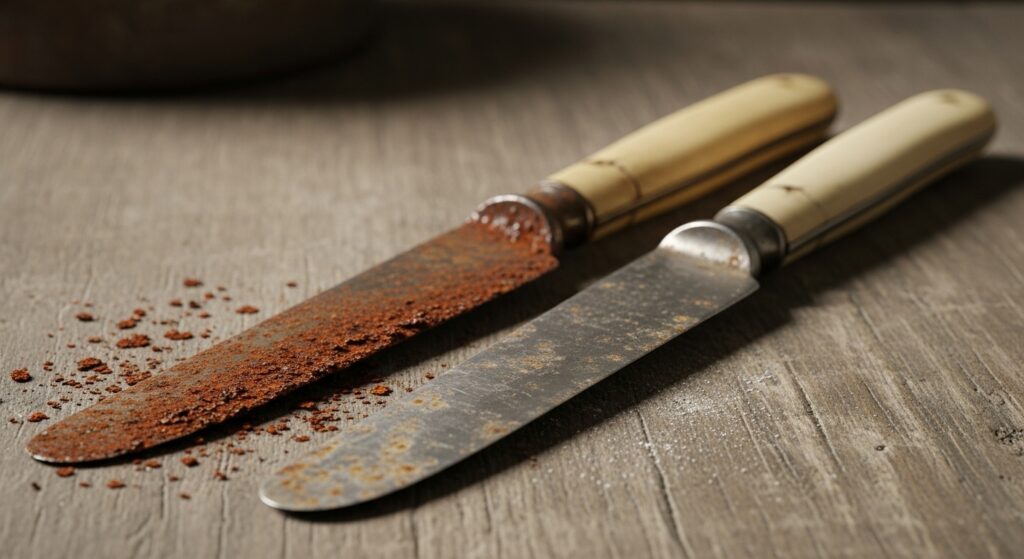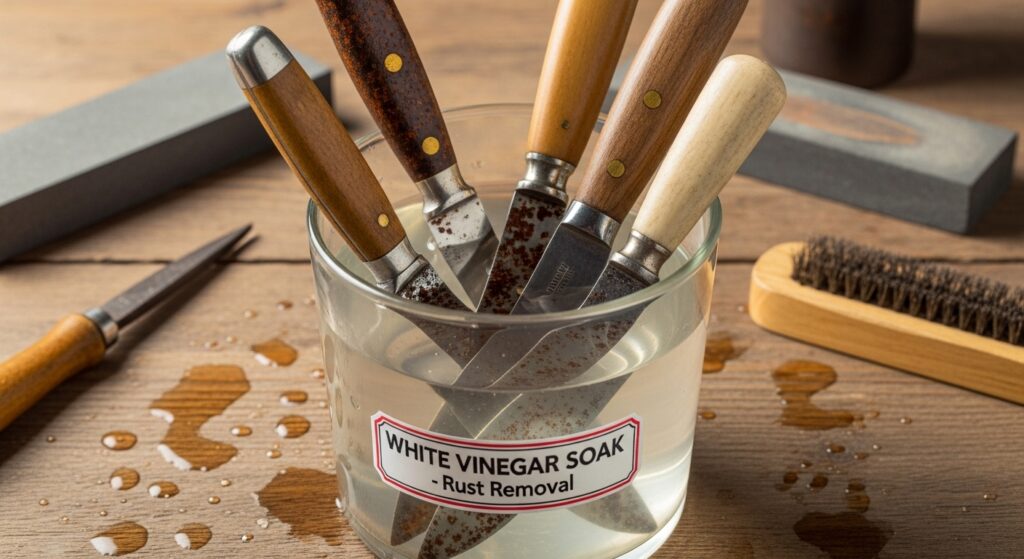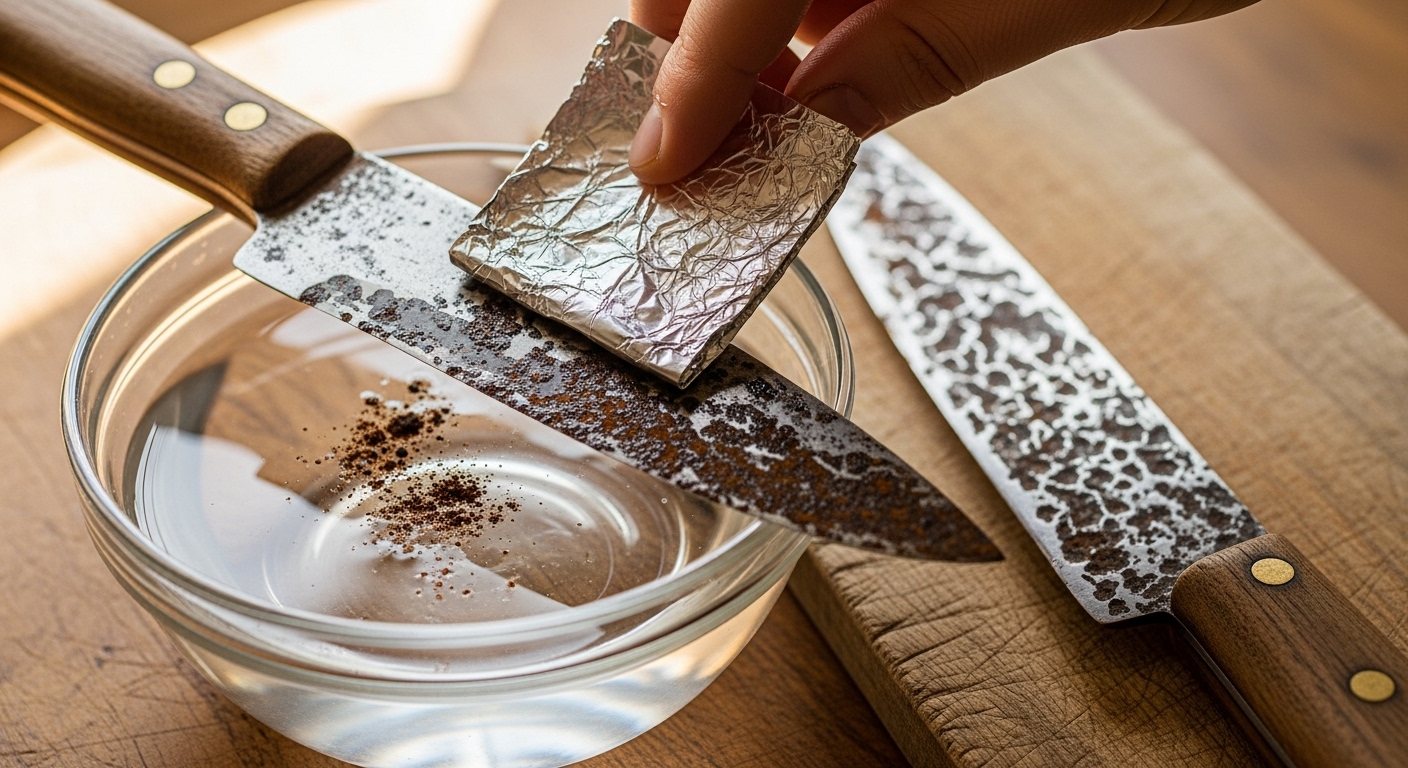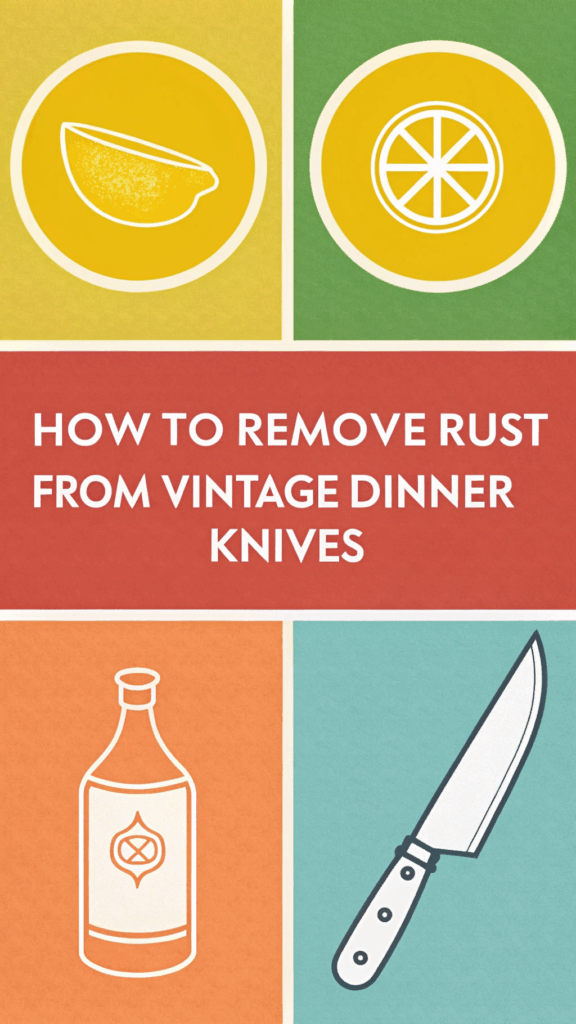Vintage dinner knives carry stories; family gatherings, passed-down traditions, and the charm of old-world craftsmanship. But as beautiful as they are, rust can slowly steal their shine. The good news? You don’t need expensive tools or harsh chemicals to bring them back to life. With a handful of household items and the right techniques, you can restore your antique knives safely and effectively.
This guide walks you through how to remove rust from vintage dinner knives without damaging their patina or character. Whether you’re prepping them for display, resale, or everyday use, these simple methods will help you revive their original beauty.
Why Do Vintage Dinner Knives Rust?

Rust develops when iron reacts with oxygen and moisture, forming iron oxide. Vintage knives are especially vulnerable because:
- Many are made from carbon steel, which rusts more easily than stainless steel
- They may have been stored improperly for years
- Food acids, humidity, and washing methods contribute to corrosion
- Older metal finishes wear down over time
Understanding the cause helps you tackle rust the right way—without damaging the blade or handle.
How to Remove Rust from Vintage Dinner Knives: Step-by-Step Methods
Below are tried-and-tested restoration techniques that are safe, gentle, and effective for antique cutlery.
1. Remove Rust with Baking Soda (Best for Light to Moderate Rust)

You’ll Need:
- Baking soda
- Water
- Soft cloth or sponge
- Soft-bristle toothbrush
Steps:
- Mix baking soda with water to create a thick paste.
- Spread the paste evenly over the rusty areas.
- Let it sit for 45–60 minutes.
- Gently scrub with a toothbrush in circular motions.
- Rinse and dry the knife immediately.
Why It Works:
Baking soda is mildly abrasive, lifting rust without scratching or damaging the knife’s original finish.
2. Use White Vinegar Soak (Ideal for Stubborn Rust)

You’ll Need:
- White vinegar
- Glass container
- Microfiber cloth
Steps:
- Fill a container with enough vinegar to submerge the knife blade (avoid soaking wooden or bone handles).
- Let the blade soak for 1–3 hours, depending on rust severity.
- Wipe with a cloth and watch the rust dissolve.
- Rinse, then dry thoroughly.
Tip:
If the handle is delicate, keep it out of the vinegar by resting the knife across the top of a jar so only the blade dips in.
3. Lemon and Salt Scrub (Perfect for Antique-Safe Cleaning)

You’ll Need:
- Lemon juice
- Coarse salt
- Soft cloth
Steps:
- Sprinkle salt generously over the rusted areas.
- Squeeze lemon juice on top to activate a fizzing reaction.
- Rub gently with a cloth for 2–3 minutes.
- Let it sit for 30 minutes, then rinse and dry.
Why It Works:
Lemon acid breaks down rust, while salt scrubs away residue without harming delicate metal.
4. Aluminum Foil & Water Trick (Fast and Gentle)

You’ll Need:
- Aluminum foil
- Water
Steps:
- Crumple a piece of aluminum foil into a ball.
- Dip it in water.
- Rub lightly over rusty spots.
Science Behind It:
Aluminum foil is softer than steel, so it removes rust without scratching the blade—while causing a mild chemical reaction that helps break down rust faster.
5. Metal Polish for Final Shine (Optional but Highly Recommended)
If your knives have sentimental or display value, apply a small amount of metal polish after cleaning. This:
- Enhances shine
- Adds a protective barrier
- Prevents future rust formation
Just be sure the polish is safe for antique metals.
How to Protect Vintage Dinner Knives from Rust (After Cleaning)
Restoration is only half the battle—proper care keeps rust from returning.
1. Dry Immediately After Washing
Never let vintage knives air-dry—water spots lead to corrosion.
2. Oil the Blades Occasionally
Use food-grade mineral oil to coat the blade lightly. This creates a barrier against moisture.
3. Store in a Dry, Cool Place
Avoid humid kitchens and enclosed drawers without ventilation.
4. Keep Away from Dishwashers
Heat, detergent, and steam can ruin vintage knife finishes.
5. Use Protective Sleeves or Cloth Wraps
These prevent scratching and reduce moisture exposure.
Common Mistakes to Avoid When Removing Rust
To keep your antique dinner knives safe, avoid:
❌ Using steel wool or harsh metal brushes
❌ Leaving knives soaking overnight (can damage patina)
❌ Applying strong acids like hydrochloric or oxalic acid
❌ Scrubbing handles made of bone, wood, or ivory
❌ Storing knives while still slightly damp
These mistakes can permanently alter the knife’s value or appearance.
Final Thoughts
Learning how to remove rust from vintage dinner knives doesn’t require professional restoration skills—just the right tools, gentle techniques, and a little patience. Whether your knives are heirloom treasures or vintage market finds, these simple DIY methods can restore their classic beauty and make them shine again.
Frequently Asked Question:
1. Can you remove rust from vintage knives without damaging them?
Yes. Using gentle methods like baking soda paste, vinegar soak, lemon + salt, or aluminum foil allows you to remove rust safely without scratching or stripping the knife’s patina.
2. Is vinegar safe for antique knife handles?
Vinegar is safe for metal blades but can damage wooden, bone, or ivory handles. Only soak the blade, not the handle.
3. What’s the quickest way to remove rust from vintage dinner knives?
The fastest method is the aluminum foil + water trick, which removes surface rust in minutes without causing scratches.
4. How long should I soak a rusty knife in vinegar?
Soak for 1–3 hours depending on rust severity. Avoid long soaks to protect the knife’s finish.
5. What prevents vintage knives from rusting again?
Dry them immediately after washing, apply a light coat of food-grade mineral oil, and store them in a dry place with good airflow.
6. Can I use steel wool on vintage knives?
Avoid steel wool—it can scratch the metal and remove valuable patina. Stick to soft cloths, baking soda, or foil.
7. Do these methods work for carbon steel knives?
Yes, all listed methods are safe and effective for carbon steel, which is common in vintage knives.


